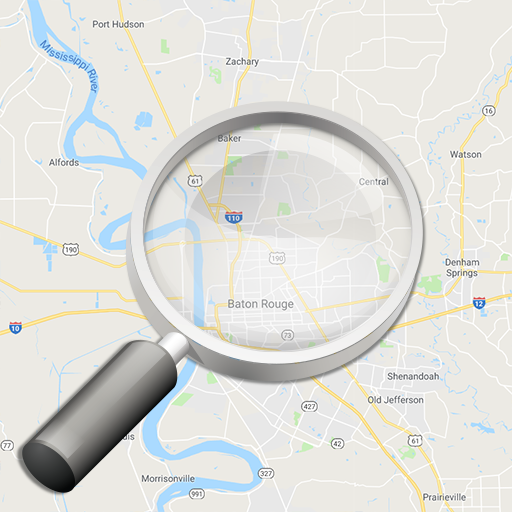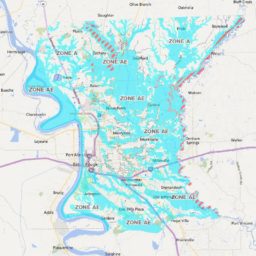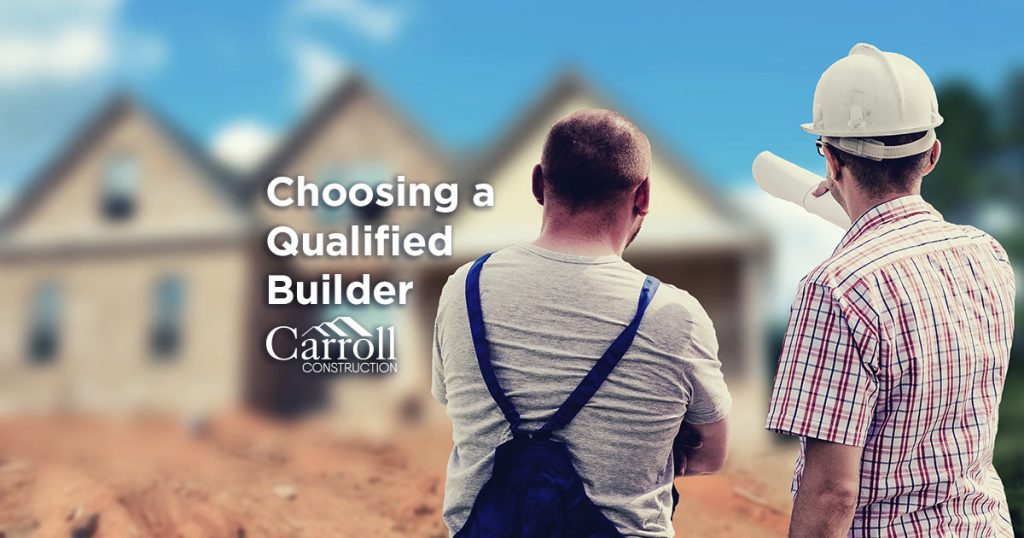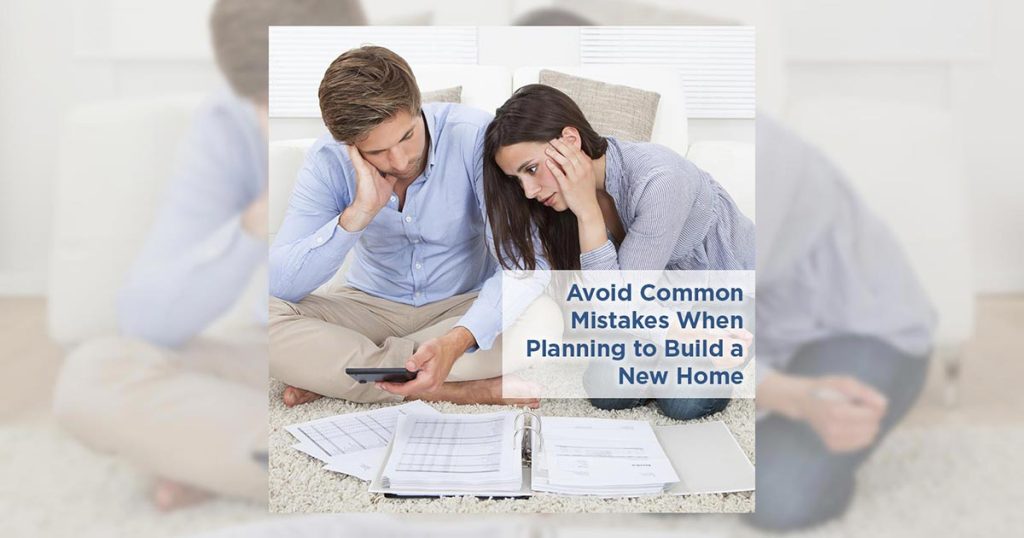Before you can actually design your home, you need to know a lot about your lot. The dimensions and characteristics of the land you build on may significantly influence the dimensions and characteristics of your home.
The biggest decision you have to now make is if you want to live on Rural Land, or on a lot in an Established Subdivision. The reason you'll have to decide now is that the size of your lot may restrict the design of your home.
Conversely, the design of your home may also limit the size of lots you consider.
Also, make sure to read "The Dirty Secrets About Dirt Work" to get helpful tips on how to plan & hire a contractor to build a proper house pad!

It is imperative to point out that this is the point where decisions have permanent -- and potentially costly -- consequences!
Here are some Pros & Cons to consider before making that decision:
PROS
RURAL LAND
- The peace & quiet of living "in the country"
- Large lots for less money per square foot of dirt
- Very few restrictions on what you can have or do on the property (i.e.; detached buildings, large gardens, etc)
- Geographic freedom (limited only by how comfortable you are being far away from work, schools, friends)
- Typically a large "buffer zone" between neighbors
PROS
NEIGHBORHOOD / DEVELOPMENT
- The feeling of living in a community
- Floodzones, Utilities and Hidden conditions are typically considered
- Homeowners Associations that monitor adherence to design guidelines and cleanliness restrictions in order to help maintain homes value and appreciation
- Typically, subdivisions are located more closely to amenities and popular school districts
- Comparable properties will be easier to find in a good economy which can translate into lower downpayments
- Often easier to resell than homes in rural areas
CONS(IDERATIONS)
RURAL LAND
- Raw land is not prepared and may require preparation; i.e.; clearing of trees, debris and dirtwork to create a flat place to construct the home.
- Floodzone: If your lot is below the floodplain, you will be required to elevate the home to meet local restrictions. Although if your lot is big enough, you may be able to get that pond you always wanted and use the dirt to elevate your home.*
Read more about building in flood zones. - If you have wetlands on your property, you will not be allowed to build on the site without a VERY expensive mitigation process which could include purchasing wetland credits from a land bank.
- Hidden conditions, such as defects in the land, old waterways, or old debris that have been covered over. The landowner is ultimately responsible for the effects of these hidden conditions. Ask neighbors about the history of the land.
- Access to all utilities isn't always available. Verify that power, water, and gas lines are on the property. How accessible are they from where the house will be place? Will you have city sewer or need a septic tank?
- "Comps", or comparable properties, may be hard to find for a fair appraisal, resulting in larger downpayment requirements.
CONS(IDERATIONS)
NEIGHBORHOOD / DEVELOPMENT
- Lots will typically be priced higher per square foot of dirt due to the value of the "Pros" above
- Annual HOA fees typically need to be factored in to the rest of your bills
- You will be restricted geographically to population centers based upon availability of lots
- Expect less privacy due to the close proximity of neighbors
- Restrictions. Amenities will typically be common to the subdivision unless you can afford to pay for upgrades out of pocket. Banks will lend on appraisals which will largely be contingent on what your neighbors included in their homes.
- Availability of lots may be limited, or purchasing a lot may require you to use the associated builder if owned by a builder block. This limits your choice of who will build your home...the worst way to choose the manager of your largest investment.
- Zoning. You will need to consider closer building lines, restricted setbacks, paving requirements and other guidelines when designing your home, which may mean changing your home design to fit the lot.
- If a builder owns the lot, you may be limited to using only the plans and selections allowed by the builder. This is considered a semi-custom or a production style home.
CONSIDERATIONS FOR BUILDING IN FLOOD ZONES
Here in Louisiana, it's quite common to build a in a flood zone.
 Although there are certain risks to building a new home inside a flood zone, most of those risks can be mitigated. The first step is to visit the Louisiana Floodmaps resource site and enter the address of your property (or a nearby address) to determine if your new house will be in a flood zone. While this tool is helpful, it does not replace the accuracy of a survey, so we encourage clients to ALWAYS order a proposed elevation for a property before purchasing.
Although there are certain risks to building a new home inside a flood zone, most of those risks can be mitigated. The first step is to visit the Louisiana Floodmaps resource site and enter the address of your property (or a nearby address) to determine if your new house will be in a flood zone. While this tool is helpful, it does not replace the accuracy of a survey, so we encourage clients to ALWAYS order a proposed elevation for a property before purchasing.
If the survey determines the land you've picked out is in a flood zone, rest assured you will be required to buy flood insurance. The typical flood insurance policy costs about $700 per year, but that average cost can vary. Another effective way to reduce the risk of flooding is to build up the ground above the 100 year Base Flood Elevation (BFE) prior to construction.
Due to the devastating flooding in the Greater Baton Rouge area in 2016, there has been a delay in publishing the BFE for many areas on the resource sites. Moreover, FEMA updates their flood maps approximately every 4 years so it is likely that the BFE for most property is not the same as it was a few years ago. This survey should generate a FEMA-approved proposed elevation certificate, and often the surveyor will even place a nail or a tree or utility pole to mark the referenced elevation. Request a Flood Hazard Determination Review From FEMA
It is important to note that you should NOT rely on the selling agent or landowner's information unless a survey to determine the proposed elevation has been completed within the last 8 months. Even if the survey has been completed within the last 8 months, it is important to verify the FEMA flood maps have not been revised within that period.
If the natural ground is above the Base Flood Elevation but the property is listed in a Special Flood Hazard Zone, then a Letter of Map Amendment (LOMA) may be obtained as an option to eliminate the flood insurance requirement. If "fill" is necessary to raise the ground up, then a Letter of Map Revision based on Fill (LOMR-F) would need to be obtained. More information on permits and requirements are available at the FEMA website.
Steven Darmofal provides an excellent resource for information on all Flood-related surveys and processes can be found here.
Carroll Construction pays especially close attention to these certificates and BFE data so that we can make the best recommendation on how high to build up the ground and what that cost would be. Due to the time it takes for FEMA to respond to LOMA requests - up to 90 days after a request is made - the timeline for construction to begin may need to be adjusted.

Article by Robert Carroll
Robert is a NAHB Certified Graduate Builder with Carroll Construction. Robert joined the team in 2007 after graduating from L.S.U. with a degree in Construction Management. Now as Chief Operating Officer, Robert Carroll is extremely active in the local builder community, a leader in the LHBA, and is an avid supporter of charity and community causes inside the Greater Baton Rouge area.



































































































































































































































































































































































































































































































































































































